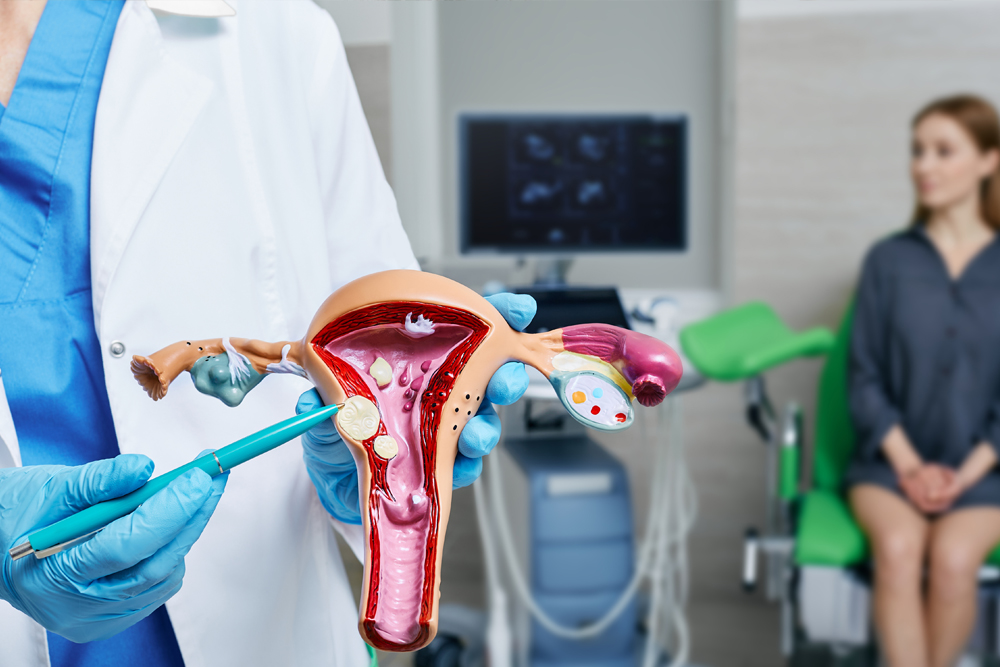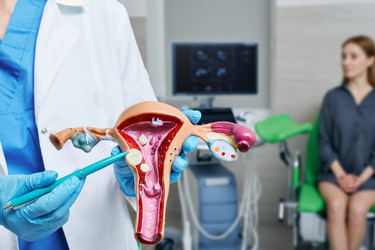Fibroids: Overview, Symptoms, Causes, and Treatment
Posted by Wombilee on Jul 7th 2024

Let's dive into the interesting world of fibroids. They frequently accompany women on their reproductive journeys, adding a little perplexity along the way.
But do not worry; we are here to break down what fibroids are. We're swimming straight into the fibroid ocean, trying to understand their perplexing symptoms, track down their causes, and figure out how to eliminate them. Put on your imaginary goggles, and let's set out on this deep-sea journey of fibroid wisdom!
Unraveling the Mystery: An Overview of Fibroids
Meet fibroids, also known as uterine leiomyomas, the ultimate party crashers at your uterine bash. These unexpected visitors aren't planning on leaving anytime soon, and they have a solid reputation. They resemble party guests that turn up uninvited, and all of a sudden, non-cancerous growths start to take over your uterus.
• Small Seeds to Juicy Grapefruits: Size Does Matter
The size of these growths ranges from minuscule seeds to astounding grapefruit diameters, so hold onto your seats. Think of your uterus as the canvas for an abstract art exhibition; these fibroids may appear as individual masterpieces or in clusters that choose to hang around in your uterus, like Mother Nature added a piece of art to your reproductive system.
• Behind the Scenes: The Mysterious Formation
The mystery deepens. The precise explanation for why these fibroids RSVP'd to your uterus party is still a mystery. The truth is that the smoking gun may actually be hormonal imbalances, heredity, and the introduction of estrogen dominance. Consider it a hormonal roller coaster with a surprising twist; these fibroids seem to like the attention that comes with hormonal changes and inherited propensities.
• Cracking the Code: Hormones, Genes, and Estrogen Drama
Hormones, you cunning beings! They're like the masterminds behind so many mysteries, including fibroids. Imagine if hormones are hosting a party, inviting genetics to join the fun, and estrogen is choosing to rule the dance floor. This trio acts as the ultimate party alliance, which causes these unwanted growths to appear suddenly. So, there you have it: fibroids, the rebels who chose to make your uterus their playground.
Nudging Nudges: Recognizing the Symptoms
Unspoken Partners? Just A Little!
Okay, pay attention because we're going to reveal the truth about fibroids, those supposedly "silent companions" who could actually be your uterus' talkative roommates. The drama may be minimal for some lucky women, but it's a full-blown fibroid fiesta for others. These unexpected visitors may arrive with a surprising delivery.
• When Fibroids Throw a Party: Unmasking the Discomfort
Imagine that fibroids are the boisterous visitors stealing the show on your uterus' stage while you are the host. Let's face it: these party crashers are anything but timid. Your heavy menstrual bleeding takes center stage, followed by periods that feel like they could last a whole marathon. Oh, and don't forget about the pressure or ache in the pelvis, which is like an unwanted dance partner you can't get rid of.
• Symptoms on Shuffle: The Fibroid Variety Show
Fibroid symptoms are as diverse as a variety show. Some girls can feel like they're being shot off with pain, while others might merely see the sparkles in passing. It feels as though your uterus is putting on its very own circus, filled with daredevil acts like frequent toilet breaks and acrobatics like severe bleeding. The experience of having fibroid is as individual to each woman as her fingerprints.
• Body Talk: Paying Attention to the Signals
The scoop is as follows: Your body is the best storyteller there is, and it uses signals to communicate. Those fibroids carry their own set of cues when they decide to RSVP to your uterus. It's like your body is trying to decipher a secret code, with pelvic pain sounding the alarm, heavy bleeding flashing a red light, and protracted periods waving a flag. These signals are your front-row seats to knowing what's happening, and your uterus is the theater.
Unmasking the Culprits: Possible Causes
Think of fibroids as puzzle pieces that science is gradually but surely assembling. When female reproductive hormones such as estrogen and progesterone act inappropriately, fibroids may use the opportunity to take the stage. Obesity, early menstrual onset, and genetic predisposition may have participated in the fibroid plot.
Facing the Music: Treatment Options
So, how can we get these rambunctious visitors out of here? Options for treatment function like a playlist for fibroid management. Lifestyle changes like a balanced diet, consistent exercise, and stress reduction may take center stage for less severe cases. In the end, a minimally invasive procedure like uterine fibroid embolization (blocking fibroids' blood supply), surgeries like a myomectomy (cutting out fibroids), or hysterectomy (bidding farewell to the uterus, which is a very last resort) might steal the show. Drugs can help reduce discomfort in the interim. Keep in mind that your gynecological maestro is your conductor and can direct you through this journey.
Timelines and Exit Strategies: How Long Do Fibroids Last? Can They Be Avoided?
The big question now is: Can you avoid the party altogether? And how long does the fibroid fiesta last? Fibroids frequently reach their peak activity during a woman's reproductive years, but as menopause takes center stage, they may start packing up and leaving. While there is no surefire way out, you can increase your chances by maintaining a healthy weight, controlling your hormones, and giving stress a backstage pass.
Wrapping Up
As we conclude our exploration of the world of fibroids, we have revealed the mystery surrounding them, from their causes to the discomfort they cause. With knowledge, we can better handle this situation and decide what is best for our wellbeing. Remember that comprehension is the first step to efficient administration and proactive treatment.

